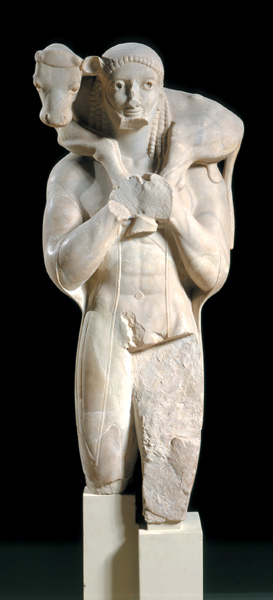The Other Acropolis: Where People Really Worshiped
Sidebar to: Antiquity’s High Holy Place

Along with the Propylaea, the Parthenon, the Erechtheum and the Temple of Athena Nike, there were numerous shrines, fountains, altars and sanctuaries crowding the Acropolis.
The best known of those other monuments was probably the bronze statue of Athena called the Athena Promachos (Athena, Defender of the City). Although no trace of it remains today, the statue stood about 30 feet high on a pedestal in the open area just east of the Propylaea. Created by Phidias, the statue stood with its back to the wall supporting the terrace on which the Old Temple of Athena stood. The statue dates before 450 B.C.E., so the Old Temple of Athena would have been at least partially standing when it was first erected. According to Pausanias, sunlight reflecting from the bronze—and the added silver details—made the statue visible to sailors coming into Athens’s port of Piraeus.
One of the most important monuments on the Acropolis was the altar where the Athenians made sacrifices to Athena. The altar lay in the area east of the Erechtheum, though the only possible remains are places in the bedrock that have been smoothed. (Thucydides, who lived in the fifth century B.C.E., indicates that that the altar was very large; but Pausanias, who visited the Acropolis in the second century C.E., does not even mention it.) The altar was the true focal point of ancient worship. (In fact, people rarely entered temples, which were the homes of the gods/images and were often used as treasuries.)
Already a library member? Log in here.
Institution user? Log in with your IP address.

